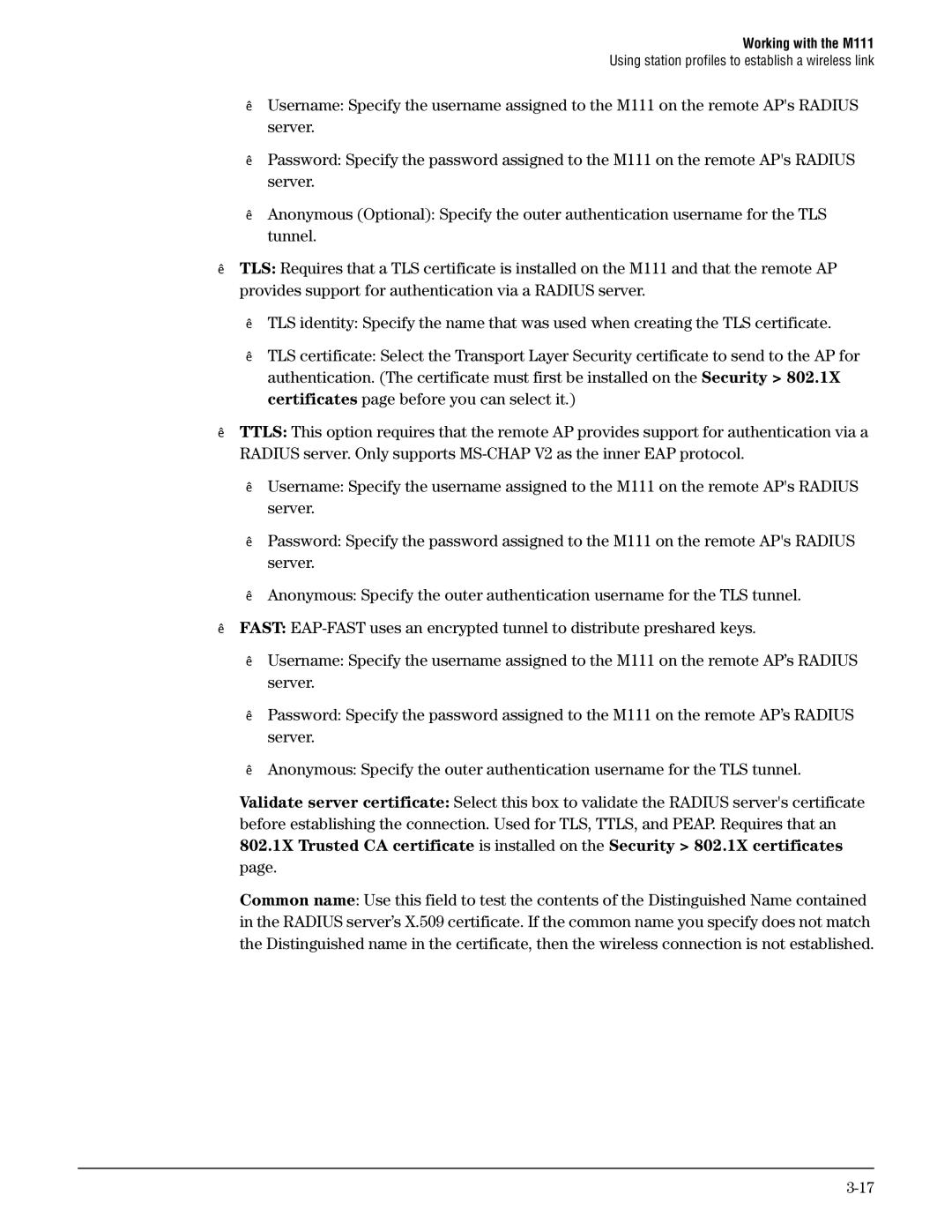Working with the M111
Using station profiles to establish a wireless link
Username: Specify the username assigned to the M111 on the remote AP's RADIUS server.
Password: Specify the password assigned to the M111 on the remote AP's RADIUS server.
Anonymous (Optional): Specify the outer authentication username for the TLS tunnel.
TLS: Requires that a TLS certificate is installed on the M111 and that the remote AP provides support for authentication via a RADIUS server.
TLS identity: Specify the name that was used when creating the TLS certificate.
TLS certificate: Select the Transport Layer Security certificate to send to the AP for authentication. (The certificate must first be installed on the Security > 802.1X certificates page before you can select it.)
TTLS: This option requires that the remote AP provides support for authentication via a RADIUS server. Only supports
Username: Specify the username assigned to the M111 on the remote AP's RADIUS server.
Password: Specify the password assigned to the M111 on the remote AP's RADIUS server.
Anonymous: Specify the outer authentication username for the TLS tunnel.
FAST:
Username: Specify the username assigned to the M111 on the remote AP’s RADIUS server.
Password: Specify the password assigned to the M111 on the remote AP’s RADIUS server.
Anonymous: Specify the outer authentication username for the TLS tunnel.
Validate server certificate: Select this box to validate the RADIUS server's certificate before establishing the connection. Used for TLS, TTLS, and PEAP. Requires that an 802.1X Trusted CA certificate is installed on the Security > 802.1X certificates page.
Common name: Use this field to test the contents of the Distinguished Name contained in the RADIUS server’s X.509 certificate. If the common name you specify does not match the Distinguished name in the certificate, then the wireless connection is not established.
